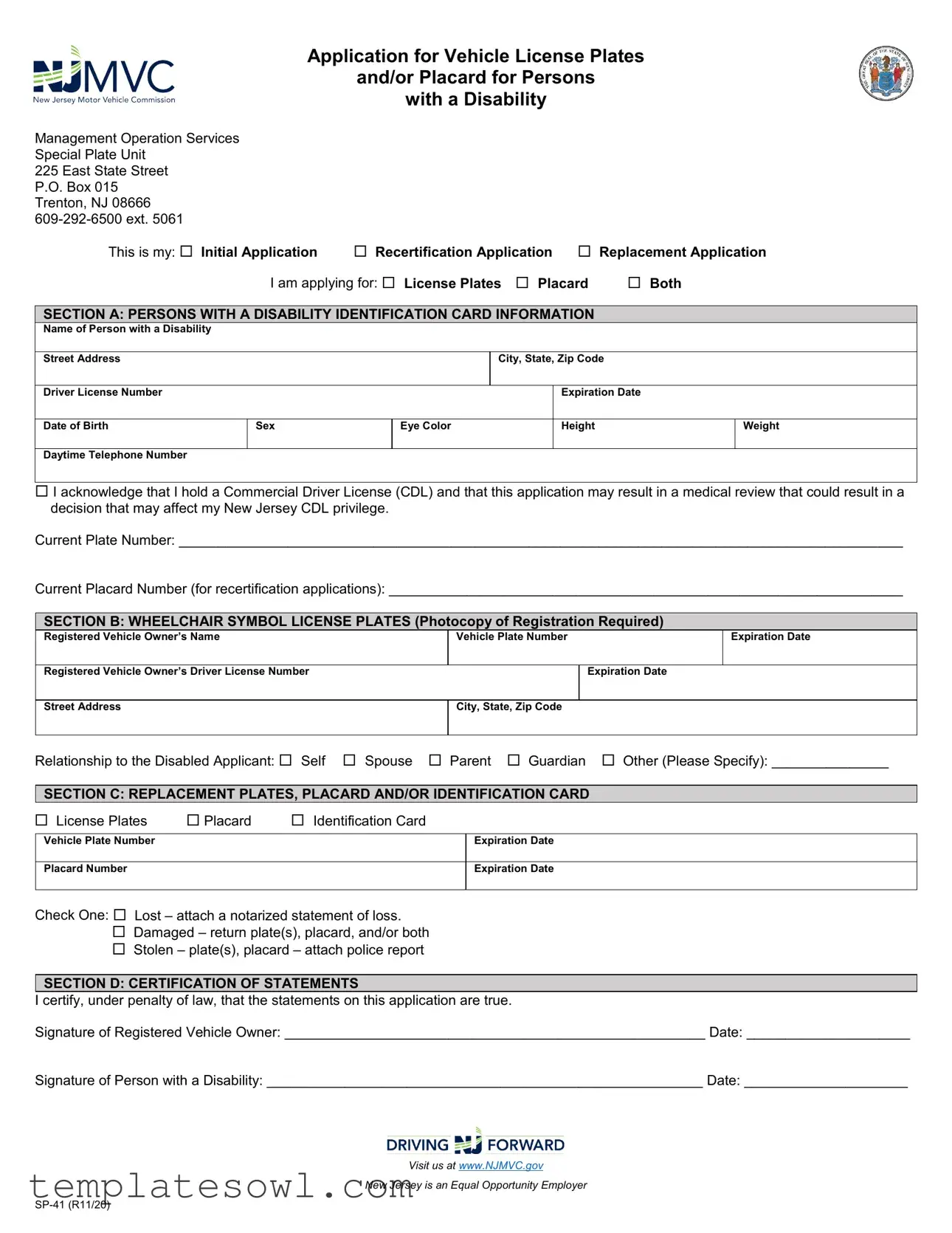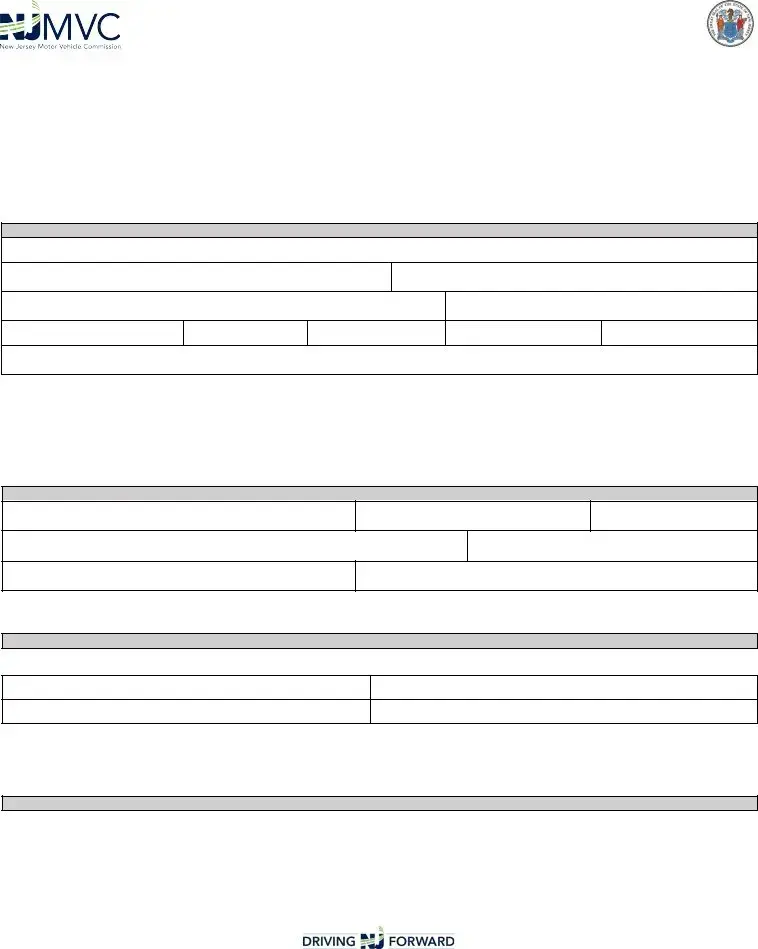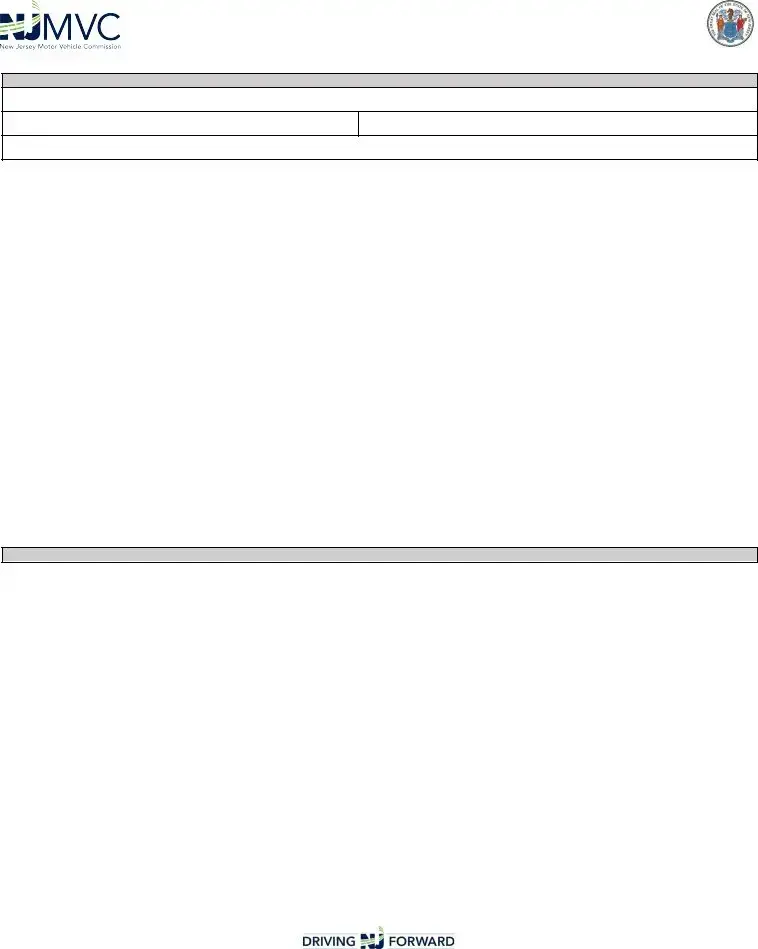Daytime Telephone Number
Required prescription attached Required letterhead attached (ONLY for medical practitioners who are not authorized to write prescriptions OR a representative of the U.S.D.V.A.)
By law, eligibility for license plates and/or a placard for persons with a disability is limited to the following conditions. (NO OTHER PERSON IS ELIGIBLE FOR LICENSE PLATES AND/OR A PLACARD).
Patient Name (please print): _________________________________________________________________________________________
1.Has lost the use of one or more limbs as a consequence of paralysis, amputation, or other permanent disability.
2.Is severely and permanently disabled and cannot walk without the use of or assistance from a brace, cane, crutch, another person, prosthetic device, wheelchair or other assistive device.
3.Suffers from lung disease to such an extent that the applicant’s forced (respiratory) expiratory volume for one second, when measured by a spirometry, is less than one liter, or the arterial oxygen tension is less than sixty mm/hg on room air at rest; or uses portable oxygen.
4.Has a cardiac condition to the extent that the applicant’s functional limitations are classified in severity as Class III or Class IV according to standards set by the American Heart Association.
5.Is severely and permanently limited in the ability to walk because of an arthritic, neurological, or orthopedic condition; or cannot walk two hundred feet without stopping to rest.
6.Has a permanent sight impairment of both eyes as certified by the NJ Commission for the Blind (Placard only).
I CERTIFY, UNDER PENALTY OF LAW, THAT MY PATIENT (print name) ___________________________________________________
HAS BEEN PERSONALLY EXAMINED BY ME AND MEETS THE ELIGIBILITY CRITERIA AS SPECIFIED IN ITEM NUMBER(S) (select from above) ________________ AND THUS MEETS THE REQUIREMENTS FOR THE RECEIPT OF LICENSE PLATES AND/OR A
PLACARD FOR PERSONS WITH A DISABILITY.
Signature of Medical Practitioner or Representative of the U.S.D.V.A.: ________________________________________________________
SECTION F: TERMS AND CONDITIONS
1.Pursuant of N.J.S.A. 2C: 21-4(a), N.J.S.A. 2C: 43-3, and N.J.S.A. 2C: 43-6, making a false statement or providing misinformation on an application to obtain or facilitate the receipt of license plates or placards for persons with disabilities is a fourth-degree crime and a person who has been convicted of this offense may be subject to pay a fine not to exceed $10,000 and a term of imprisonment of up to 18 months.
2.Wheelchair symbol license plates may be issued for one vehicle owned, operated or leased by a person with a disability or family member providing transportation for that person.
3.Wheelchair symbol license plates must be renewed every year, disability recertification is required every three years.
4.The placard must be displayed on the rearview mirror of the vehicle whenever such vehicle is parked in a designated wheelchair symbol parking space and must be removed when the vehicle is in motion.
5.Persons with a Disability Identification Card and placards must be recertified every three years.
6.The Motor Vehicle Commission requires that a person’s disability be recertified by a qualified medical practitioner and their qualification for license plates/placard as provided under N.J.A.C. 13:20-9.1(a) 4.
7.The persons with a Disability placard and/or license plates are to be used exclusively for a person with a disability named on the identification card. The identification card is nontransferable and shall be revoked is used by any other person. If the license plate and/or placard are no longer used by the person named on the identification card, they must be returned to the New Jersey Motor Vehicle Commission. Abuse of this privilege is cause for revocation of both the license plates and/or the placard.
8.Application for a Persons with a Disability Identification Card shall be submitted to the Motor Vehicle Commission not more than 60 days following the date upon which a medical professional or representative of the United States Department of Veterans Affairs certifies that the applicant meets the definition of “persons with a disability.”
I CERTIFY, UNDER THE PENALTY OF LAW, THAT I AGREE WITH THE TERMS AND CONDITIONS OF THIS APPLICATION.
Signature of Registered Vehicle Owner: ______________________________________________ Date: _____________________________
Signature of Person with a Disability: ________________________________________________ Date: _____________________________
Visit us at www.NJMVC.gov
New Jersey is an Equal Opportunity Employer
SP-41 (R11/20)


